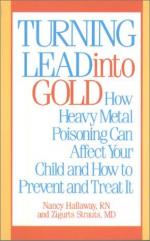|
This section contains 547 words (approx. 2 pages at 300 words per page) |

|
Heavy metal poisoning is the toxic accumulation of heavy metals in the soft tissues of the body.
Heavy metals are chemical elements that have a specific gravity (a measure of density) at least five times that of water. The heavy metals most often involved in human poisoning are lead, mercury, arsenic, and cadmium. Some heavy metals, such as zinc, copper, chromium, iron, and manganese, are required by the body in small amounts, but these same elements can be toxic in larger quantities.
Heavy metals may enter the body in food, water, or air, or by absorption through the skin. Once in the body, they compete with essential minerals such as zinc, copper, magnesium, and calcium, and interfere with the function of the organs. People may come in contact with heavy metals in industrial work, pharmaceutical manufacturing, and agriculture. Children may be poisoned as a...
|
This section contains 547 words (approx. 2 pages at 300 words per page) |

|


